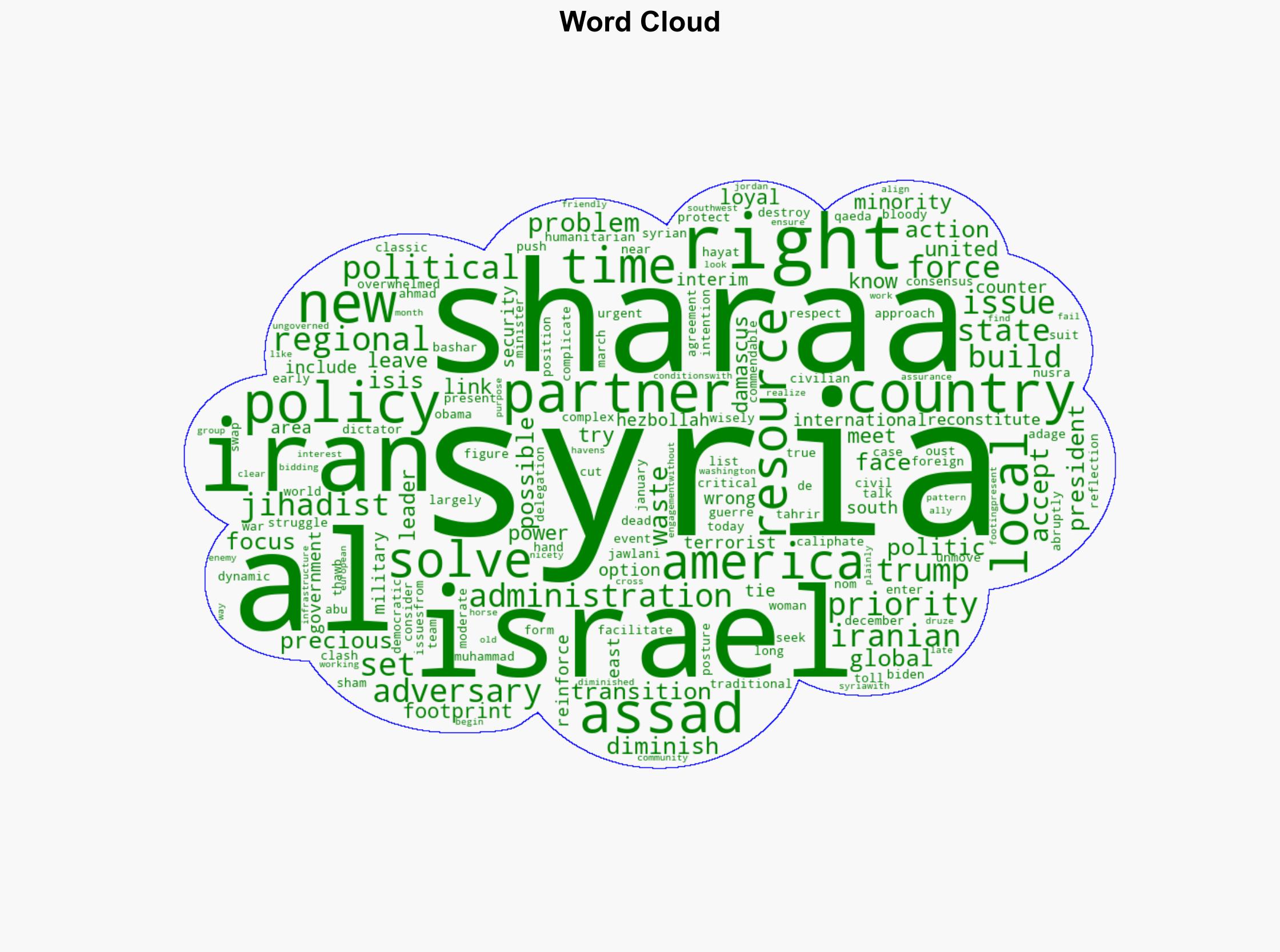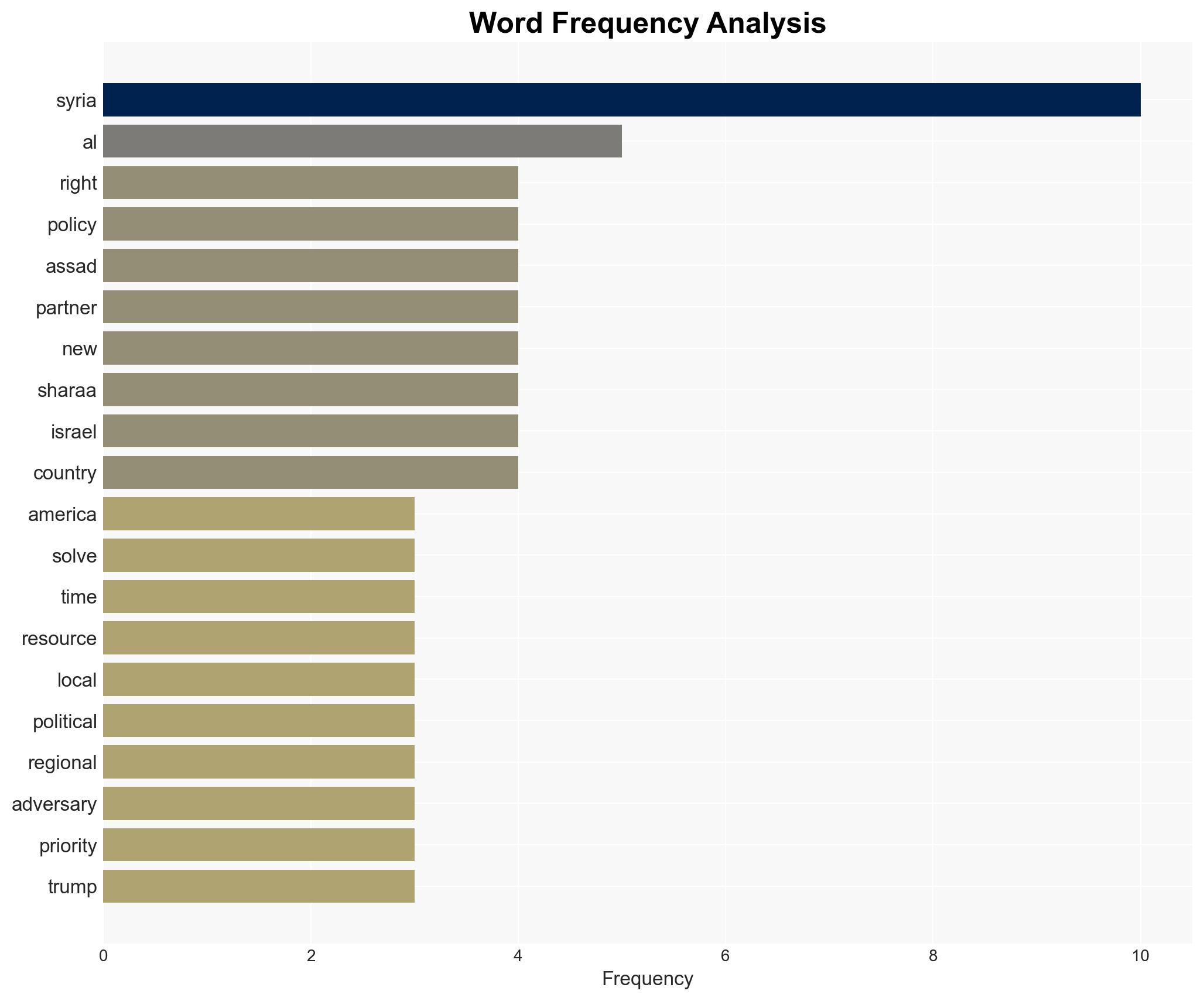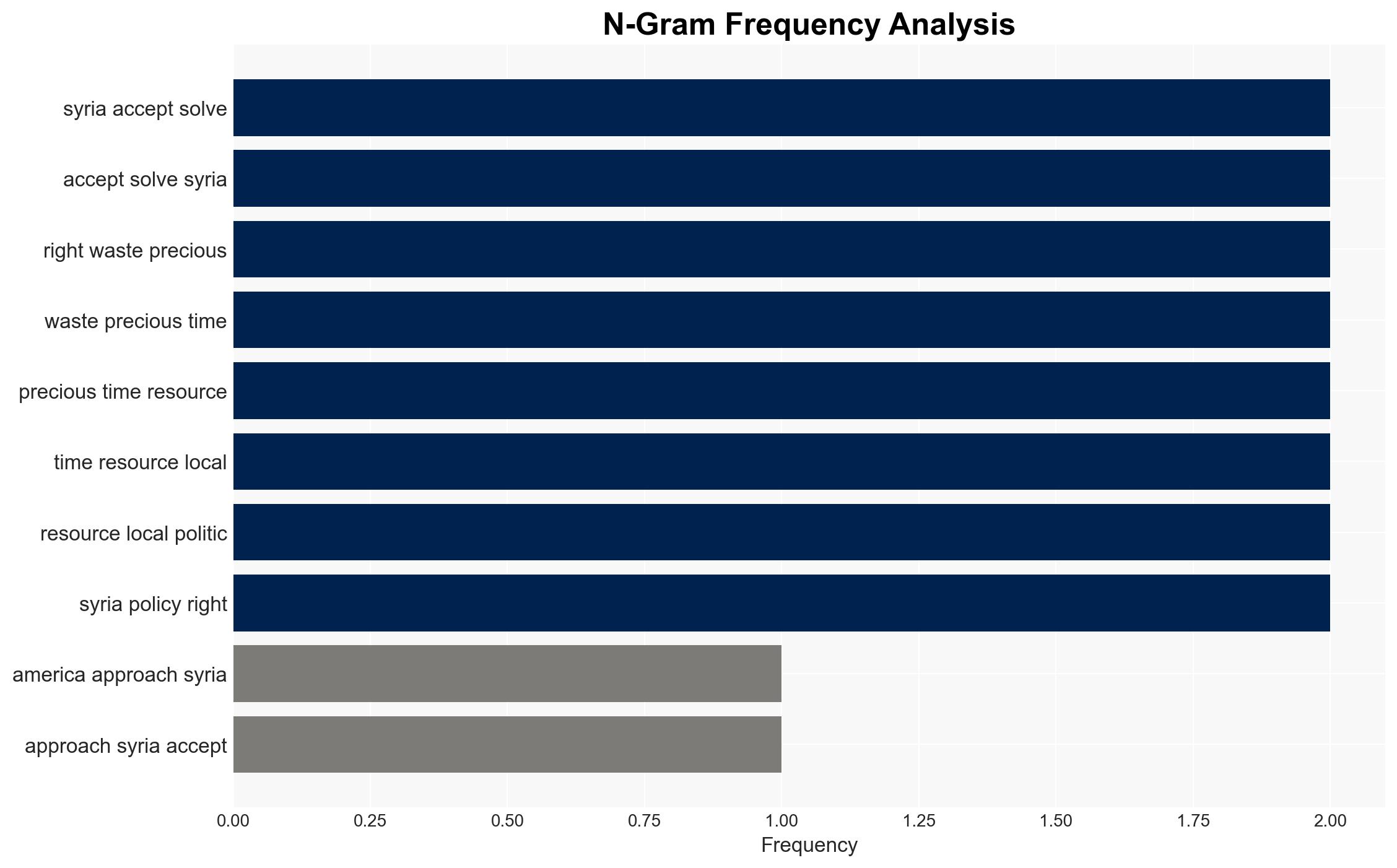An America First Approach to Syria – The National Interest
Published on: 2025-04-06
Intelligence Report: An America First Approach to Syria – The National Interest
1. BLUF (Bottom Line Up Front)
The strategic landscape in Syria is shifting with the ousting of Bashar al-Assad and the rise of Ahmad al-Sharaa. The U.S. must navigate a complex web of regional adversaries and allies to prioritize the destruction of ISIS and diminish Iran’s influence. The Trump administration’s focus on immediate threats rather than long-term political solutions is deemed prudent. However, engagement with Ahmad al-Sharaa’s interim government requires careful consideration to avoid empowering jihadist elements.
2. Detailed Analysis
The following structured analytic techniques have been applied for this analysis:
General Analysis
The removal of Bashar al-Assad has led to a power vacuum filled by Ahmad al-Sharaa, whose connections with jihadist groups complicate the geopolitical landscape. The U.S. strategy of prioritizing the defeat of ISIS and curbing Iran’s influence aligns with regional partners like Israel and Jordan. However, the risk of inadvertently supporting jihadist factions remains high. The U.S. must balance immediate security concerns with long-term stability efforts.
3. Implications and Strategic Risks
The rise of Ahmad al-Sharaa poses a significant risk to regional stability, potentially leading to increased jihadist activities. The U.S. faces the challenge of supporting an interim government without legitimizing extremist elements. The ongoing conflict could exacerbate humanitarian crises and destabilize neighboring countries, impacting global security and economic interests.
4. Recommendations and Outlook
Recommendations:
- Engage cautiously with Ahmad al-Sharaa’s government, ensuring clear conditions to prevent jihadist empowerment.
- Strengthen alliances with regional partners like Israel and Jordan to counter Iranian influence and terrorist threats.
- Enhance intelligence-sharing and military cooperation to address emerging threats effectively.
Outlook:
Best-case scenario: A stable interim government emerges, reducing jihadist influence and fostering regional cooperation.
Worst-case scenario: Empowerment of jihadist factions leads to increased regional instability and humanitarian crises.
Most likely outcome: Continued geopolitical tension with gradual progress towards diminishing ISIS and Iranian influence.
5. Key Individuals and Entities
The report mentions significant individuals and organizations:
- Bashar al-Assad
- Ahmad al-Sharaa
- Abu Muhammad al-Jawlani
- Jacob Olidort




